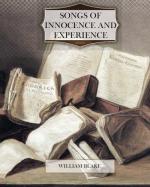|
This section contains 12,804 words (approx. 43 pages at 300 words per page) |

|
SOURCE: Pagliaro, Harold C. “Blake's ‘Self-annihilation’: Aspects of Its Function in the Songs, with a Glance at Its History.” English 30, no. 137 (summer 1981): 117-46.
In the following essay, Pagliaro discusses Blake's handling of the Romantic discourse on death at a time when religious and social certainties about mortality were dissolving.
I
Viewed historically, the English Romantics were heirs to a state of mind that gave death a prominent place in individual consciousness, where it was not likely to be controlled by orthodox faith. For generations before them, various analysts—sceptics, devout theologians, scientists, and others—contributed to a weakening of those earlier social and religious structures that had explained death by placing it in a heavenly scheme of things, or had reduced its power to harass the imagination by providing order in daily life. By and large, the Romantics accepted this legacy of history, and made the vulnerability to...
|
This section contains 12,804 words (approx. 43 pages at 300 words per page) |

|


